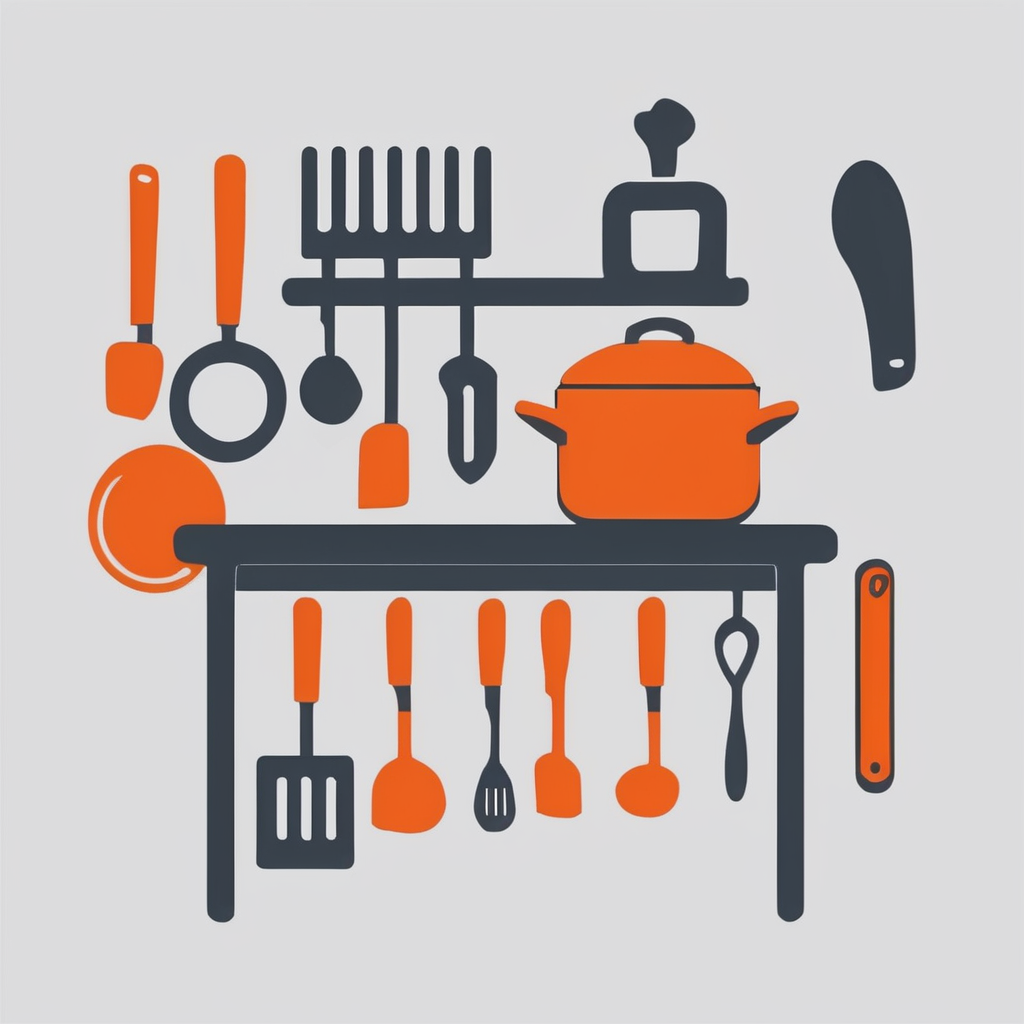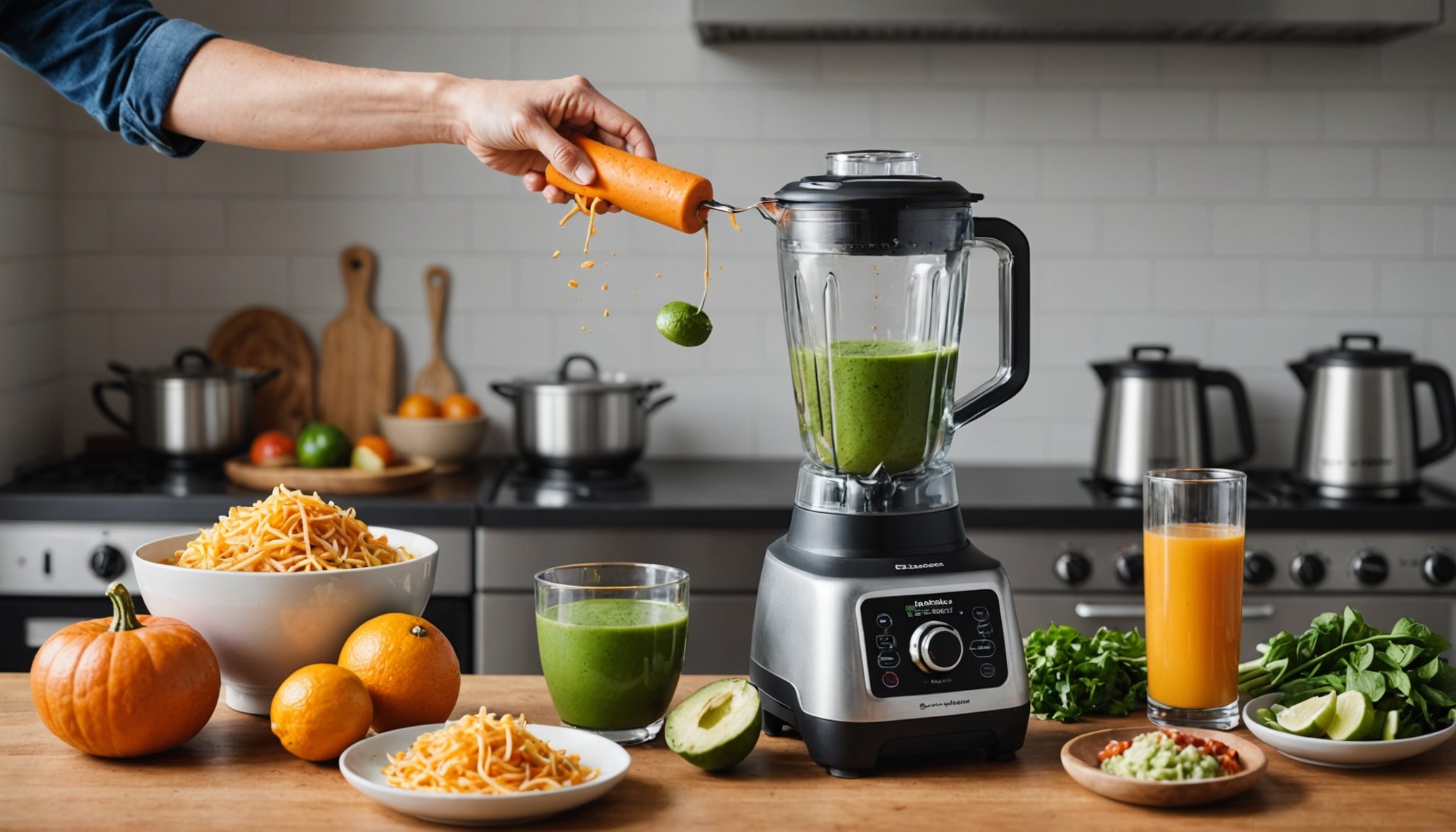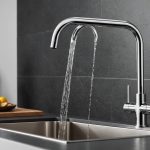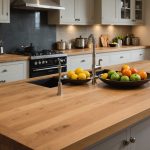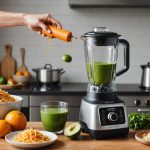Overview of High-Speed Blenders
High-speed blenders have become a kitchen essential for modern cooks. Their technology relies on powerful motors combined with uniquely designed blades that spin at astonishing speeds. This capability makes high-speed blenders ideal for tackling tough ingredients, pureeing products smoothly, and crafting culinary creations with ease.
One of the standout benefits of high-speed blenders is their ability to create smooth, velvety textures in soups and sauces. By blending ingredients at such high velocities, they break down even the most stubborn fibrous foods. This ensures a uniform texture without the need for straining or extensive prepping, saving time and effort.
Also to read : Mastering flavor: your comprehensive handbook for choosing the perfect food dehydrator to preserve nutrients
Cooking versatility is another hallmark of high-speed blenders. Whether you’re whipping up a smoothie, blending a batch of hummus, or grinding nuts into nut butter, these appliances handle diverse tasks effortlessly. High-speed blenders can even heat up soups through the sheer power of friction generated by the spinning blades, eliminating the need for additional heating.
Inclusion of a high-speed blender in your kitchen arsenal opens up a world of culinary possibilities, combining technology, efficiency, and versatility for an unforgettable cooking experience.
Topic to read : Time management in the kitchen: the ultimate guide to choosing an easy-to-use and accurate timer
Key Features to Consider
Choosing a blender with the right features can significantly enhance your kitchen experience. One crucial element is the motor power. High motor power ensures blending consistency, efficiently breaking down fruits, vegetables, and even ice. This is essential for achieving the smooth texture desired in smoothies and purees.
Capacity is another key factor. Consider the blender’s jar size, especially if you regularly prepare large batches of soups or sauces. A larger capacity allows for versatility, accommodating both small and large quantities without the need for multiple batches, saving time and effort.
A blender’s ease of cleaning is vital for maintenance and user convenience. Models with detachable blades and dishwasher-safe components simplify the cleaning process. Look for features that prevent food from getting trapped in hard-to-clean areas.
Modern blenders often include features like pre-programmed settings, which enhance usability. Prioritising features like power, capacity, and ease of maintenance ensures you invest in a kitchen appliance that meets your needs and enhances your culinary activities.
Comparison of Top High-Speed Blender Models
When it comes to choosing a blender, model comparison is essential to ensure you get the best for your needs. In this section, we’ll delve into a comparison of three top blenders on the market, examining their strengths and weaknesses.
Brand A: Model Overview
Brand A’s blender stands out for its efficient blending capabilities, offering a robust motor that handles both soft fruits and tough vegetables. Key specifications include multiple speed settings and a generous capacity container. However, some users have noted that it can be quite noisy during operation.
Brand B: Model Overview
Moving on to Brand B, this blender is renowned for its sleek design and durability. It includes advanced features such as pre-programmed blending modes and a user-friendly interface. While it performs well across a variety of tasks, the drawback is its steep price point, which may not fit everyone’s budget.
Brand C: Model Overview
Lastly, Brand C combines affordability with impressive performance. With its compact size, it’s perfect for small kitchens. It boasts consistent blending results and simple maintenance. However, it lacks some of the premium features found in more expensive models, which may limit versatility.
Each of these top blenders presents its unique pros and cons, offering something for different user preferences and needs.
User Reviews and Testimonials
In exploring user reviews for soup and sauce preparation appliances, patterns emerge that offer valuable insights. Customers often highlight the efficiency and versatility of different models. Customer experiences reveal satisfaction with the ease of preparing soups and sauces, emphasising how these appliances save time in the kitchen.
Product testimonials frequently spotlight specific features. Many users appreciate the precise heat control and durable design, noting that these contribute significantly to performance and reliability. Testimonials suggest that ease of cleaning is another favored characteristic, making the products user-friendly.
Despite the praises, reviews also touch on areas for improvement. Some customers mention occasional issues with consistency, pointing out that certain models have a learning curve before achieving optimal results. Nonetheless, the positive feedback often outweighs such concerns.
Key takeaways from these customer testimonials include:
- High satisfaction with time-saving capabilities
- Appreciation for intuitive controls and durability
- Desire for improved guidance in achieving consistent results
Overall, the insights gleaned from user feedback underline the practical benefits and trustworthiness of these appliances. They also guide potential buyers in making informed decisions by highlighting both strengths and areas for improvement.
Tips for Optimal Use in Cooking
Achieving efficient results with a blender can transform your cooking experience. Blender tips are essential for preparing ingredients efficiently. Start by cutting ingredients into uniform pieces before blending. This ensures smoother consistency and prevents uneven processing, enhancing your cooking efficiency.
When aiming for the right texture in soups and sauces, consider the following blending techniques. For silky soups, begin with cooked ingredients at a moderate temperature. Gradually increase the blender speed for a creamy consistency without overheating the mixture. If you’re working on a chunkier sauce, pulse the blender intermittently. This method allows you to control the level of chunkiness while integrating flavors evenly.
Troubleshooting common blending issues is another key aspect of optimal blender use. If blending seems uneven, ensure you add liquid to alleviate the motor strain. For stubborn air pockets, stop the blender and stir the contents with a spatula, then proceed. These blender tips can significantly improve your cooking efficiency, making food preparation swift and effective. Embrace these blending techniques to elevate your culinary creations, ensuring consistently excellent results.
